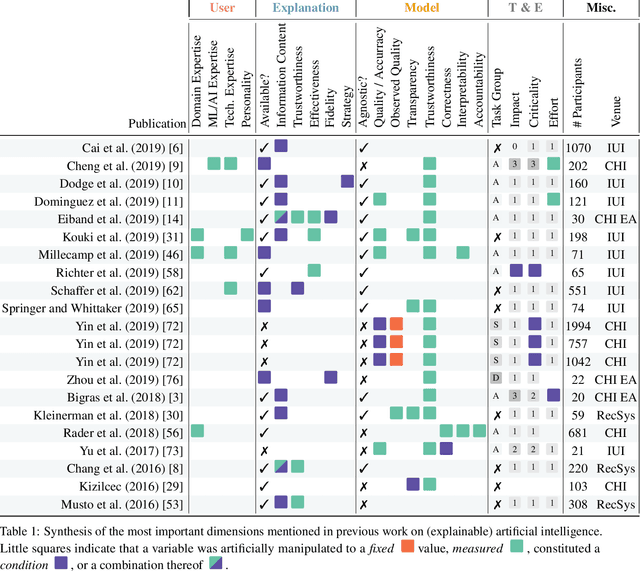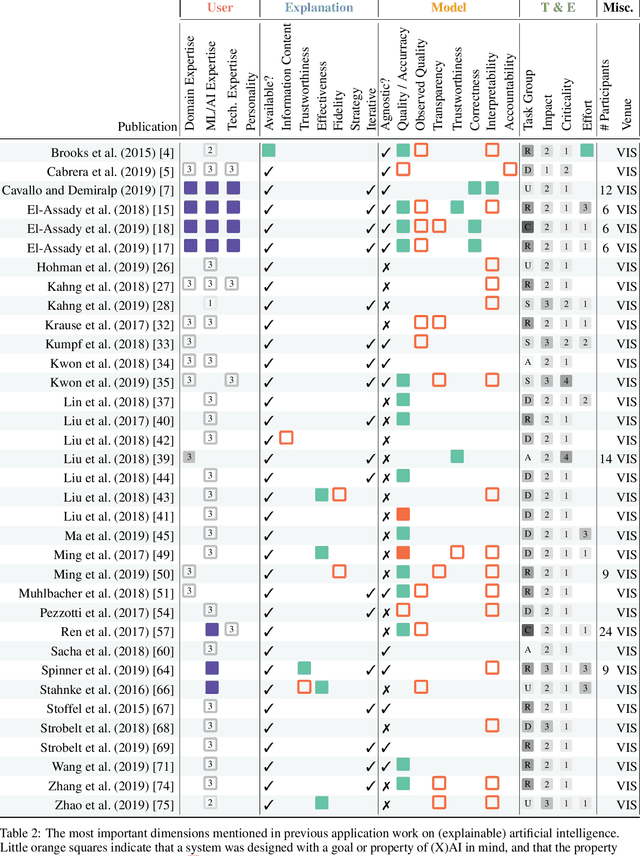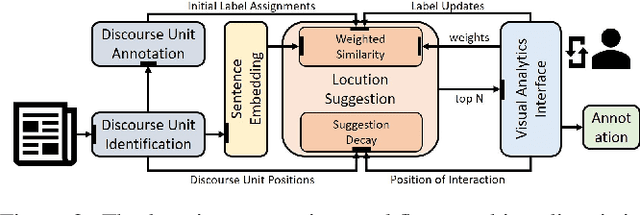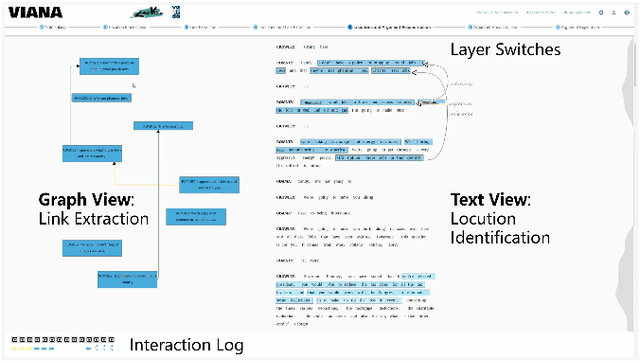Fabian Sperrle
Should We Trust AI? Design Dimensions for Structured Experimental Evaluations
Sep 14, 2020



Abstract:This paper systematically derives design dimensions for the structured evaluation of explainable artificial intelligence (XAI) approaches. These dimensions enable a descriptive characterization, facilitating comparisons between different study designs. They further structure the design space of XAI, converging towards a precise terminology required for a rigorous study of XAI. Our literature review differentiates between comparative studies and application papers, revealing methodological differences between the fields of machine learning, human-computer interaction, and visual analytics. Generally, each of these disciplines targets specific parts of the XAI process. Bridging the resulting gaps enables a holistic evaluation of XAI in real-world scenarios, as proposed by our conceptual model characterizing bias sources and trust-building. Furthermore, we identify and discuss the potential for future work based on observed research gaps that should lead to better coverage of the proposed model.
VIANA: Visual Interactive Annotation of Argumentation
Jul 29, 2019



Abstract:Argumentation Mining addresses the challenging tasks of identifying boundaries of argumentative text fragments and extracting their relationships. Fully automated solutions do not reach satisfactory accuracy due to their insufficient incorporation of semantics and domain knowledge. Therefore, experts currently rely on time-consuming manual annotations. In this paper, we present a visual analytics system that augments the manual annotation process by automatically suggesting which text fragments to annotate next. The accuracy of those suggestions is improved over time by incorporating linguistic knowledge and language modeling to learn a measure of argument similarity from user interactions. Based on a long-term collaboration with domain experts, we identify and model five high-level analysis tasks. We enable close reading and note-taking, annotation of arguments, argument reconstruction, extraction of argument relations, and exploration of argument graphs. To avoid context switches, we transition between all views through seamless morphing, visually anchoring all text- and graph-based layers. We evaluate our system with a two-stage expert user study based on a corpus of presidential debates. The results show that experts prefer our system over existing solutions due to the speedup provided by the automatic suggestions and the tight integration between text and graph views.
 Add to Chrome
Add to Chrome Add to Firefox
Add to Firefox Add to Edge
Add to Edge